CRYOS
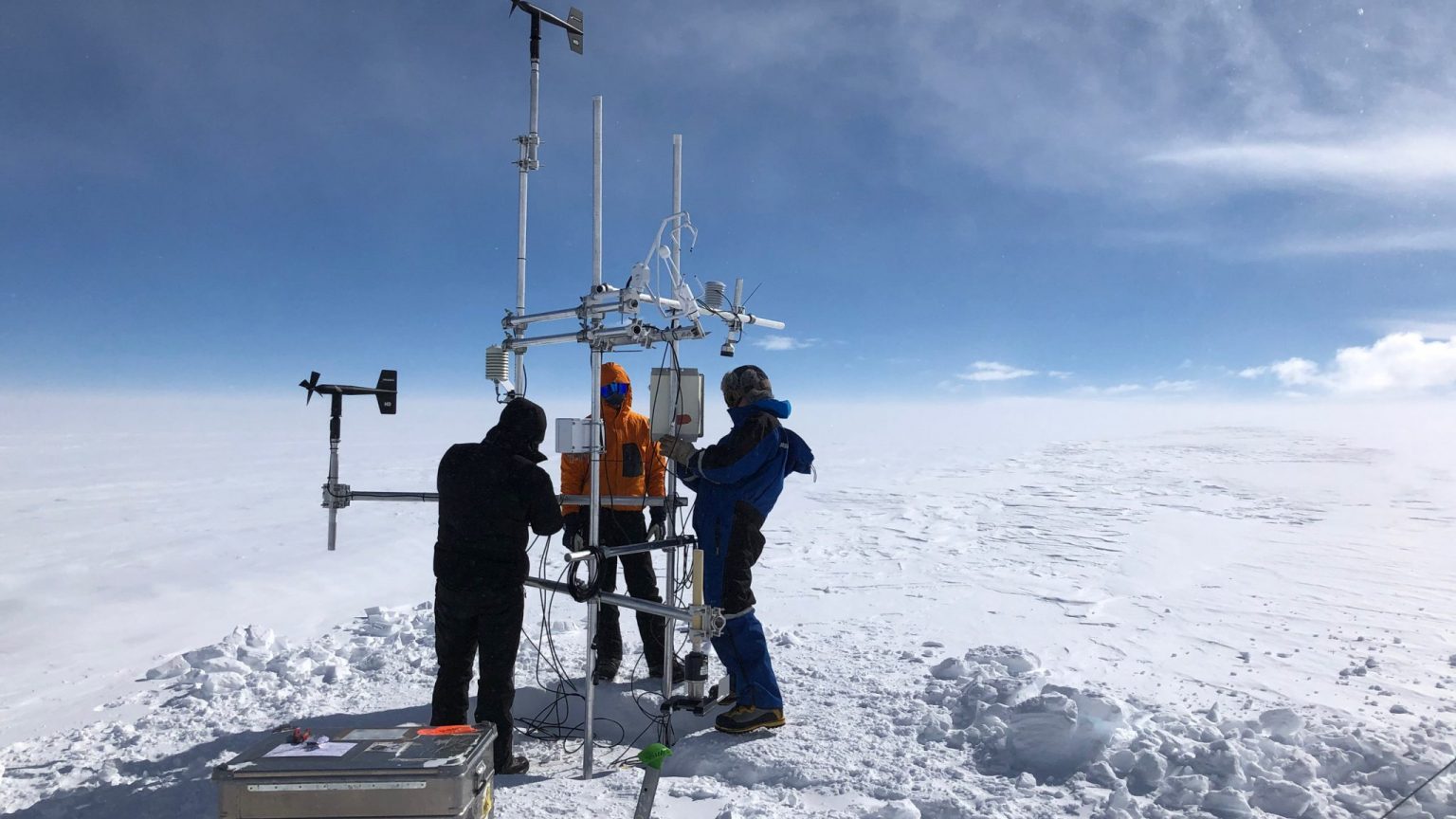
Snow drift station on the high Plateau (2200m a.s.l.) some 40km South of Princess Elisabeth station. Katabatic winds are strong up there. (Photo: Hendrik Huwald)
General Mission
The laboratory of cryospheric sciences investigates the processes that shape snow and ice in mountains and polar regions. In particular, snow cover processes, snow-atmosphere interactions and mountain hydrology are in the focus of current research. This includes a strive for deeper understanding of the complicated mass and energy exchange processes within, above and below a snow cover but also predictions of future snow and ice in mountains and high latitudes. A newer work area is the risk management and optimization in the field of renewable energy production based on our detailed understanding of water, wind and radiation processes in mountains.
CRYOS is hosting Environmental Sensing Observatory (ESO) whose mission is to develop methods in aerial sensing, autonomous navigation and sensor fusion.
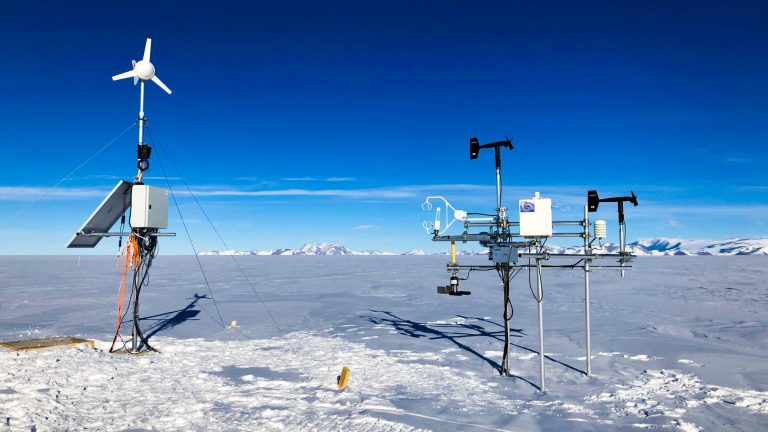
This main SNF research project of Prof. Lehning looks in detail at the snow accumulation processes that happen in mountains. Understanding preferential deposition, snow transport and snow sublimation will help to constrain high-mountain precipitation, which remains elusive even in well equipped countries such as Switzerland. Overall, the project aims at improving our general ability to assess high-mountain water balance, meteorology and natural hazards worldwide. Key information on the project is found on the SNF web page: http://p3.snf.ch/project-179130.
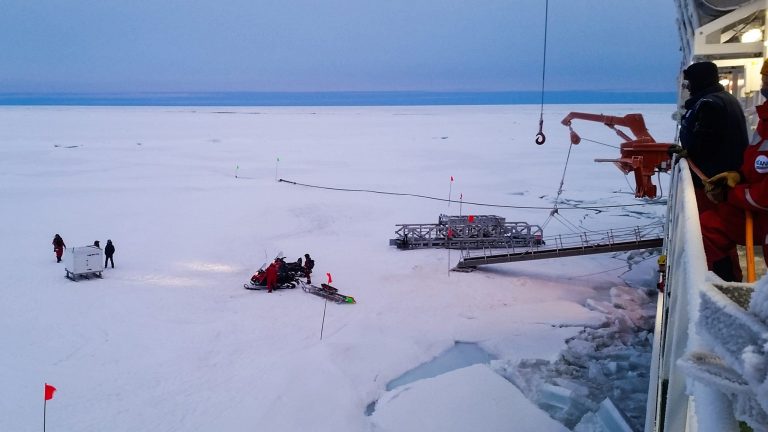
The collaboration project (funded by SNF and DFG), targets the role of the snow cover on sea ice. Within the project, CRYOS has developed a new version of the famous SNOWPACK version, which now includes salinity dynamics and vapor transport. The model is now fit to produce snow mass balance and snow profiles for sea ice, which can be used to aid satellite retrievals of total sea ice thickness using microwave sensors. The collaboration is with the Alfred Wegener Institute and the University of Hamburg. More information on the SNF page: http://p3.snf.ch/project-160667-.
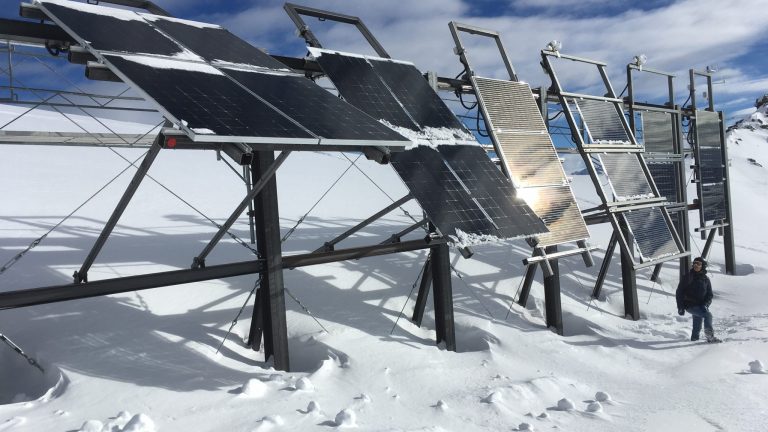
The research on the role of PV and Wind in the Swiss energy turn-around has been supported by the Swiss Competence Center for Energy Research – Supply of Energy (http://sccer-soe.ch/en/home/). In the context of this project, it could be shown how the winter gap of energy supply can greatly be reduced by installing PV and Wind generation in mountains. The mountain wind research is also supported by the Swiss Federal Office of Energy (SFOE).
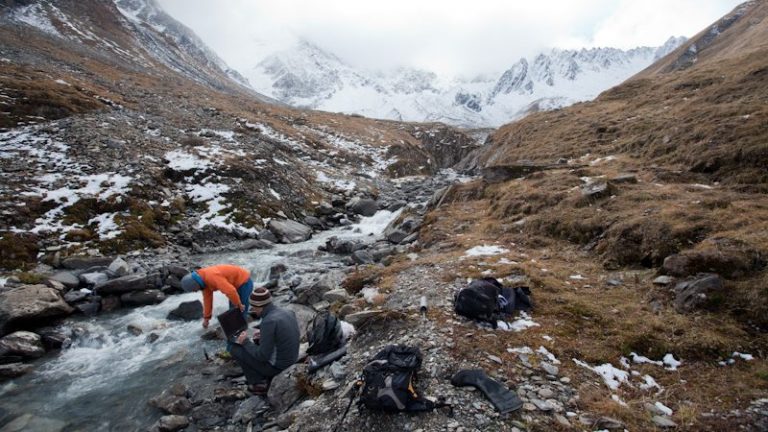
Stream thermodynamics (temperatures) are significantly affected by climate change with drastic consequences for the aquatic fauna, ecosystems and industry. In the framework of the National Center for Climate Services (NCCS), a large-scale national research project “Hydrological Principles of Climate Change – Hydro-CH2018” CRYOS is investigating and modeling stream temperatures in Switzerland using a unique model chain of the snow cover models Snowpack and Alpine3D as well as the hydrological model StreamFlow. In a first step, this project analyzed the historical evolution of stream temperature in Switzerland. Current research, using the CH2018 climate change scenarios of MeteoSwiss, simulates stream temperature in Switzerland until the end of the 21st century. This project is funded by the Federal Office for the Environment (FOEN).
